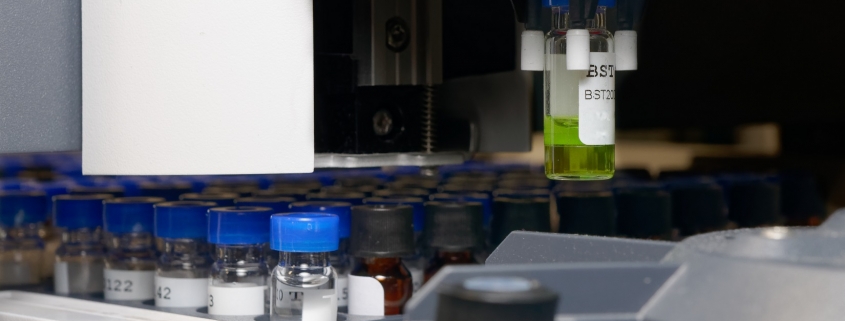First step in lowering MRL overshoot is understanding the whole process
Every fruit and vegetable trader has to deal with it at some point, some more than others: the exceeding of the permitted MRL value on fruit and vegetables and this leads irrevocably to the destruction of the product. Exceeding the MRL often has various causes. Michel Witmer, product manager for foodstuffs at Groen Agro Control, therefore gives the advice to his clients in the AGF to draw up a top five list of products with which they have the most problems. “From that point, they can start working towards improvement and thus fewer MRL violations on fruit and vegetables, thus limiting recalls.”
For 25 years, Groen Agro Control has had a specialised laboratory for analysing chemical and microbiological constituents on fruit and vegetables. “Based on those analyses, we as a company can also give advice on how things can be done differently. After all, many factors play a role when it comes to an MRL violation: When did pesticides end up in the fruit? During cultivation, after harvest or during transport in the container and do the various parties communicate with each other about the permitted value for the end customer? It also happens that such pesticides are sometimes applied by accident. Think of a grower who uses water from the river downstream that has been polluted by another grower upstream.”
Talking to the grower
Michel ziet vooral dat overzees fruit uit Afrika, Zuid-Amerika en Azië soms een te hoog pesticiden gehalte hebben. “Het is daar soms moeilijker om goed contact te houden met de telers die producten verbouwen voor de Europese markt. Zeker als hier in Europa de regels weer veranderen met nog strengere eisen rond de MRL in producten. Neem als voorbeeld straks het nieuwe Pomelo-seizoen. Daarvoor zijn de regels weer veranderd voor gebruik van Chloorpyrifos, maar of een Chinese teler dan gelijk zijn manier van telen gaat aanpassen is maar de vraag. Of wat dacht je van een voorbeeld dichter bij huis: Chloorprofam in aardappelen en uien waarvan het gebruik sinds dit jaar verboden is in de EU.”
Advice
Michel says that Groen Agro Control can give advice on adjusting the programmes. “We look for instance at the use of alternatives in crop protection products and the application at a certain moment in the cultivation. In addition, we often see that different pesticides are used on one product with exactly the same effect. We see that happen a lot on strawberries. The biggest gain for many AGF importers is to pass on MRL changes to their suppliers in time.
“The MRL is a fixed maximum value that is set for the use of certain pesticides and the legislation seems to become stricter every year. The European Commission often announces a further tightening six months in advance, giving growers the chance to reduce their doses or look for alternatives. However, the retail sector in Europe applies even stricter requirements on these residues and these also differ per chain. For us, the work would be easier if the retail sector were more transparent about their specifications so we can better inform the sector and the laboratories about the steps to take.
For more information please contact Michel Witmer, product manager at Groen Agro Control, Distributieweg 1 – 2645 EG Delfgauw, phone 015 2572511
Date of publication: Thu 3 sep 2020
Author: Thom Dobbelaar
© AGF.nl
Photography: Martin van der Marel


